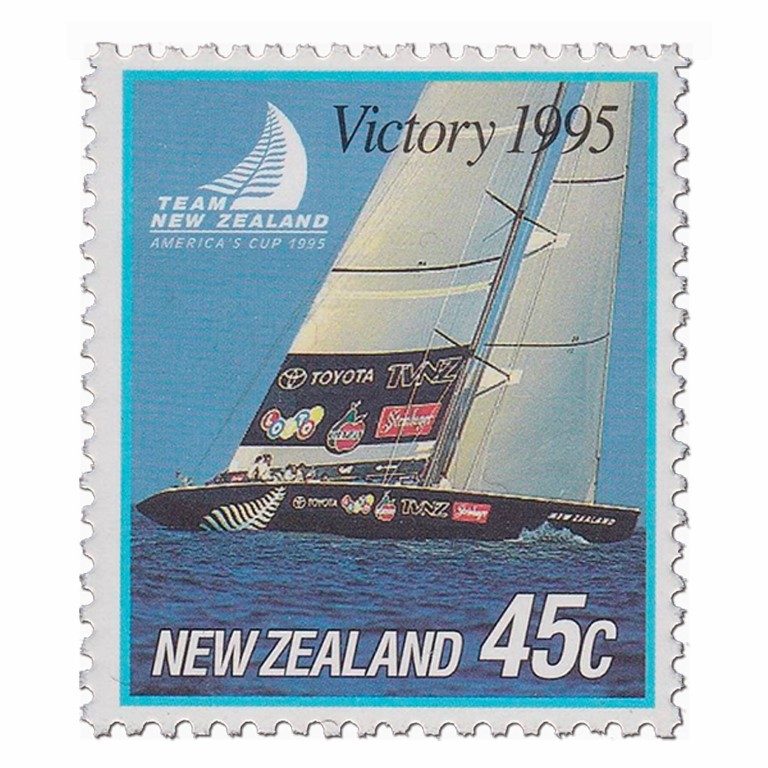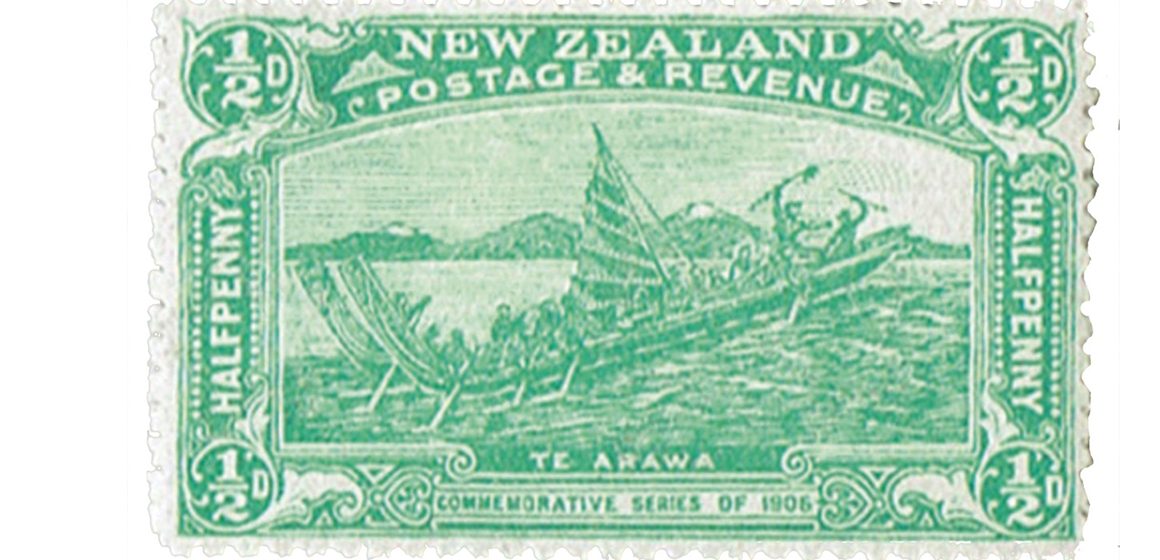

Modern boaties may struggle to remember when they last licked a stamp but, as philatelists will attest, New Zealand’s postal legacy is intertwined with boats and the sea. Centuries of nautical history is richly reflected in the humble stamp.
Issued in 1898, the eight-penny Pictorial is believed to be the first New Zealand stamp depicting both Maori life and a maritime subject. Melbourne’s E Howard was the artist – though with lines more akin to a pakeha canoe, his waka suggests a degree of artistic licence.
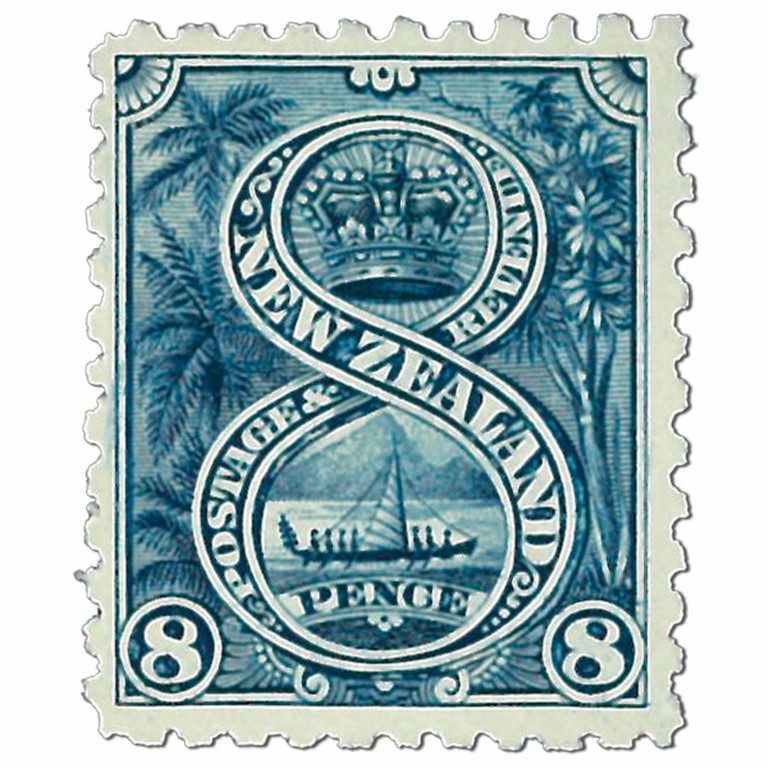
Ethnologists describe the great war waka as being “as big as Viking ships”, propelled by up to 100 paddlers. Howard’s little waka carries seven figures, five of them paddlers. The figure in the bow is probably the kaitaki. The vessel carries a sail amidships, while the taurapa at the stern is unconventional in style. It would be interesting to know the source of Howard’s design.
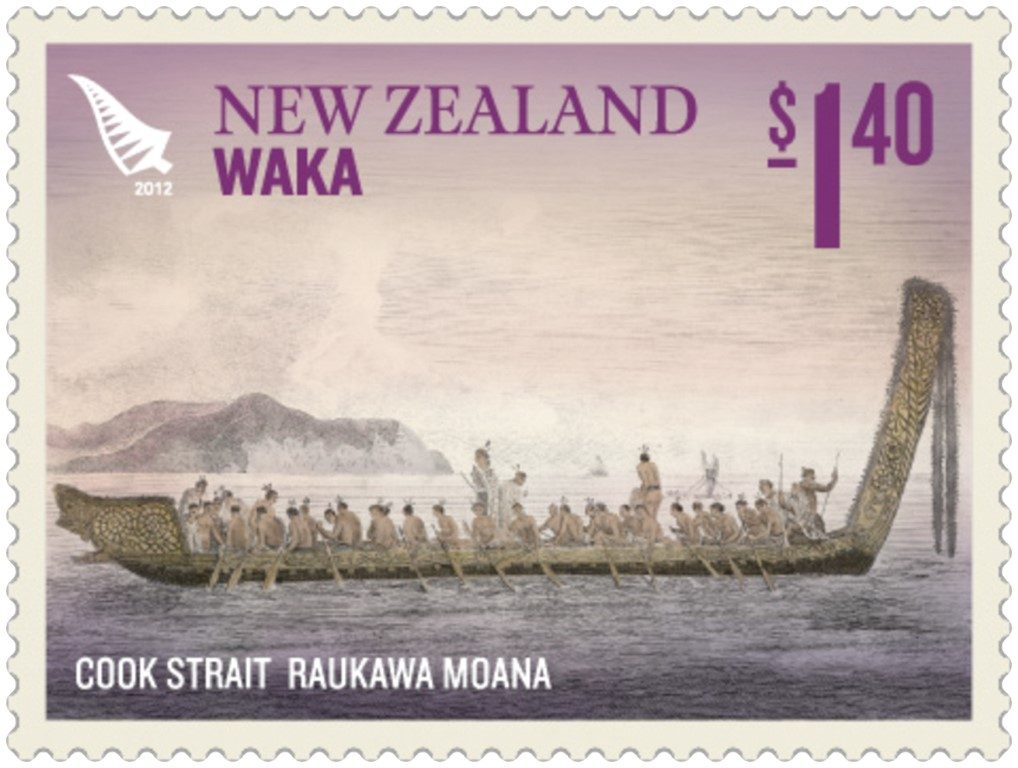
Many waka were destroyed in colonial conflict to inhibit Maori mobility. The only remaining large, intact waka taua is Te Toki-ATapiri at Auckland Museum. Built in 1836 in the Hawkes Bay, it found its way to the Manukau Harbour where it was confiscated by colonial militia in 1863. It’s carved from a single totara and could carry around 100 kaihoe (paddlers).
BARQUES & BRIGANTINES
Two of the earliest ships built in the North were the Herald and the New Zealander – both appear on stamps issued in 1975. The Herald was built at Paihia in 1826 by Henry Williams and Gilbert Mair. At 50 tons she was the first vessel built for the Church Missionary Society led by Henry Williams. She provided better links to Sydney for the Mission and reduced dependence on local supplies. Like many others, she struck rocks while entering the Hokianga Harbour and stranded on the shore.

A similar fate befell the New Zealander, a 200-ton brigantine laid down at Horeke on the Hokianga Harbour in 1828. Horeke, formerly known as Deptford, is often referred to as New Zealand’s first shipyard. The ship’s name derived from her figurehead – that of a Maori, commonly referred to as New Zealanders in those days.
The New Zealander’s first voyage from Hokianga to Sydney took six days, earning her the accolade as the fastest ship sailing out of Port Jackson. The Horeke shipyard belonged to Raine, Ramsay and Browne, prominent Sydney merchants. But by the end of 1830 they were broke and the yard was sold to an East India Company man, Thomas McDonnell. The New Zealander met her fate in 1836 on Mahia Peninsula when the anchor chain snapped in stormy weather and she was wrecked on the rocks.
BOATBUILDERS
Auckland was home to numerous boatbuilders from the first days of European settlement. Three of the most prominent families were the Niccols, Logans and Baileys whose creations all feature on New Zealand stamps.
A 1975 stamp features the Jessie Kelly, a 110-foot topsail schooner built by Henry Niccol at Devonport in 1866. Niccol arrived in Auckland in 1842 and was based at Mechanics Bay before transferring to Devonport around 1865. He built Jessie Kelly for Captain Kelly of Sydney and her speed was legendary. In a 1873 test against the Sydney-built Noumea, she arrived in New Caledonia well ahead of the Australian contender.

In 1847 Anglican Bishop Selwyn purchased a Niccol vessel (the schooner Undine) to explore the Melanesian reaches of his vast episcopal see. Years later the Church of England Melanesian Mission chose Niccol to build its new barquentine Southern Cross III for the same work. Auckland boatbuilder John Waymouth’s design was chosen from 14 submissions.
She was launched with great ecclesiastical ceremony in March 1874. Lady Martin, a key Mission supporter, chalked a cross on the stem and declared “I name thee Southern Cross and may thy mission be to carry the message of the Cross amongst the islands of the sea.”
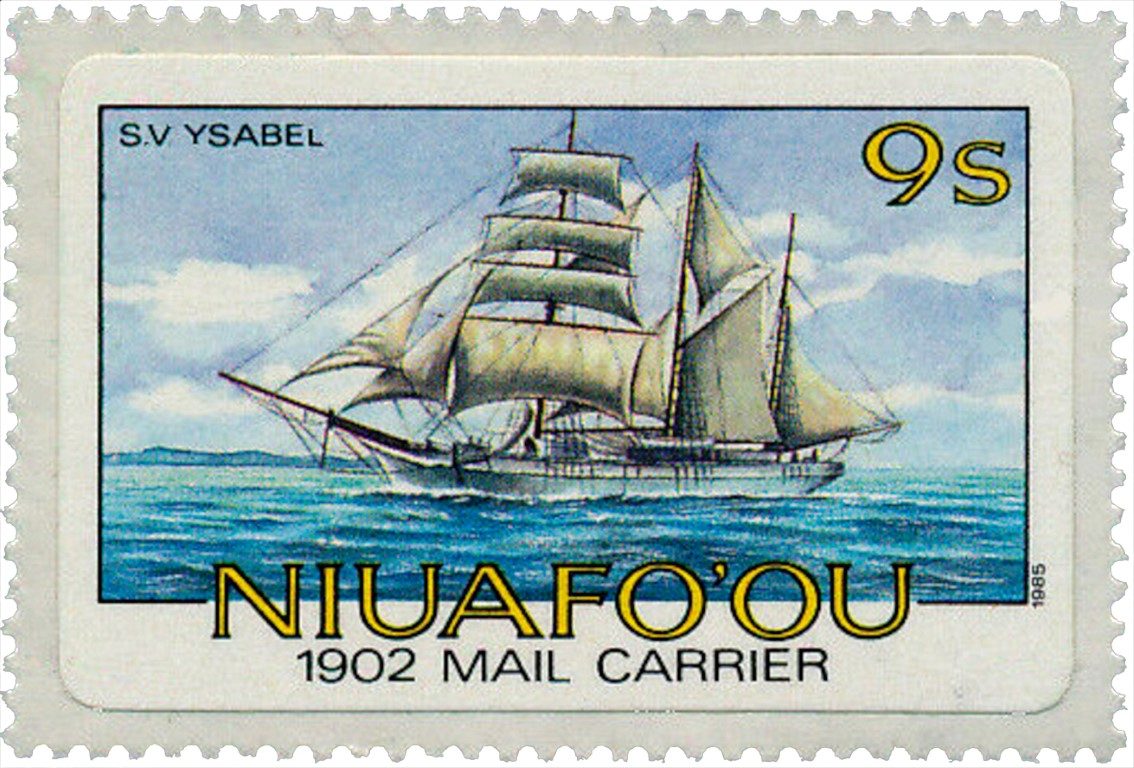
But with the arrival of Southern Cross IV from England in 1891 her name was changed to Ysabel. In 1925 Ysabel was purchased by a Tahitian, Nicholas Tuhiva. She sailed under the French flag until destroyed by fire in 1925.
SCOWS
In 1873 Septimus Meiklejohn began work on a revolutionary type of ship at Omaha which became a trusty workhorse around the coast. Based on North American principles, the Lake Erie was New Zealand’s first scow, a flat-bottomed, square-ended vessel with a schooner rig.
A migrant from Nova Scotia, Meiklejohn was associated with the Waipu settlement, arriving as a youngster in 1858. His family began building ships in 1859 and Lake Erie was the first Septimus constructed in his own name.

With a retractable centreboard the scow could work in shallow waters and was run up on to a beach for easy cargo handling. Lake Erie didn’t live long – in June 1879 she sprung a leak off Bream Tail and was wrecked after being run ashore to save the lives of those aboard.
Charles Bailey, the founder (around 1870) of the Bailey boatbuilding dynasty on Auckland’s North Shore was renowned for his prize-winning yachts. Bailey won the contract to build the Britannia – a paddle steamer designed by James Trevithick, grandson of celebrated inventor and steam engine pioneer Richard Trevithick. She was launched in 1885.
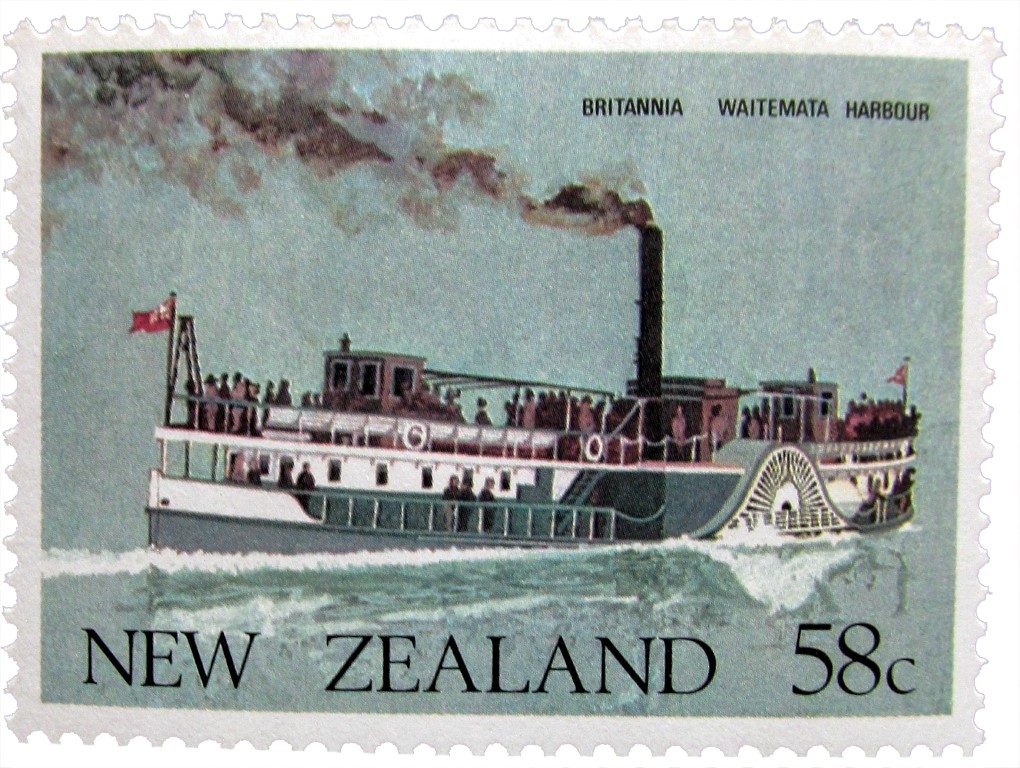
Her timber came from a giant kauri tree which had lain undiscovered on the forest floor for over a century. She was a regular on excursion and charter runs but wasn’t popular with passengers – too noisy and smuts from the funnel soiled passengers’ clothing.
In 1921 she was sold, refitted with enclosed wheelhouses, an extended funnel and modified engines. She appears on a 1984 stamp. She continued charter work around the Waitemata, running until the mid-30s when she was broken up at Coromandel.
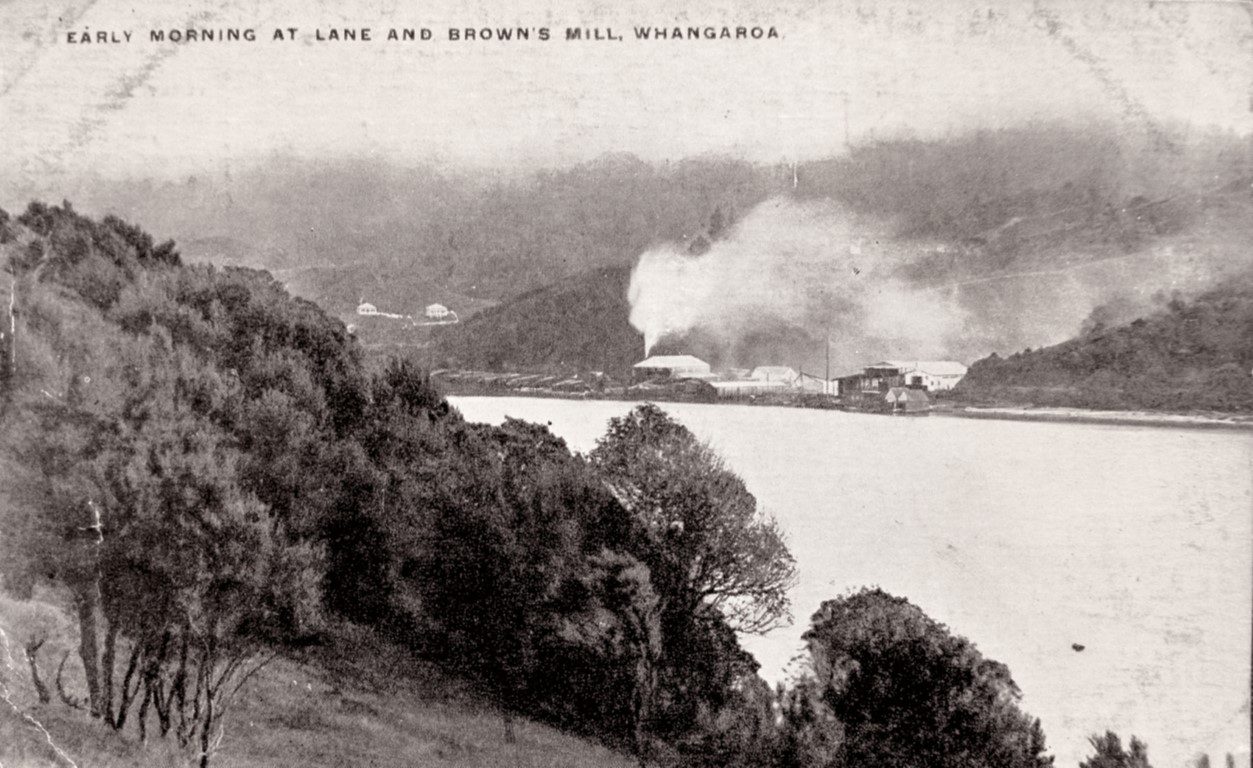
The Countess of Ranfurly, a three-masted topsail schooner was built for the New Zealand Government by Lane and Brown of Totara North in the Whangaroa Harbour. William Brown and Thomas Major Lane founded their firm in 1870 on the Kaeo River before moving to Totara North two years later. Workers at the mill and shipyard were a pious bunch and often sang hymns as they worked – the yard was colloquially known as ‘The New Jerusalem.’
Christened in June 1901 by the Governor (the Earl of Ranfurly), the Countess serviced New Zealand’s island territories until around 1907 when she was sold to a Sydney firm. She was wrecked in 1910 on a reef off New Caledonia’s Isle of Pines.
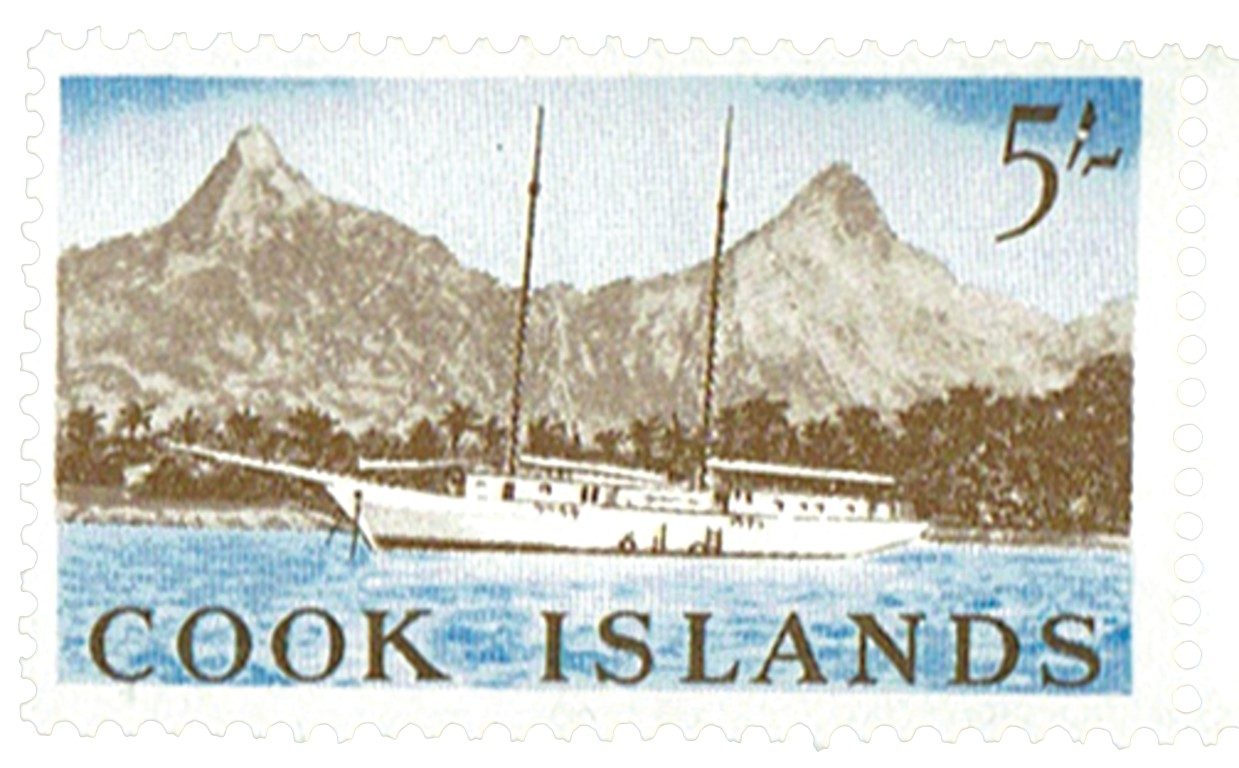
Charles Bailey junior designed and built the 173-ton Tiare Taporo in 1913 for the Pacific Islands trading company AB Donald. She was the last schooner built for the Islands trade and was named after the lime flower in recognition of the company’s lime juice trade. She sailed regularly to French Polynesia and was considered lucky not to have fallen victim to German raiders during WW1. She was lost in the mid-60s after dragging her mooring at Aneityum, New Hebrides.
TINSELTOWN
British director David Lean’s proposed remake of Mutiny of the Bounty was the fifth film dealing with the sea saga. The first was Raymond Longford’s Australia/New Zealand silent movie, partly filmed in Rotorua.
Lean’s Bounty film was to be based on Richard Hough’s 1972 book Mr Bligh and Mr Christian. In September 1977 Hollywood businessmen visited Whangarei Engineering Company to seal the deal – building the Bounty replica for $1.5 million. Where predecessors had been wooden, the Whangarei vessel was steel-hulled, sheathed with timber.
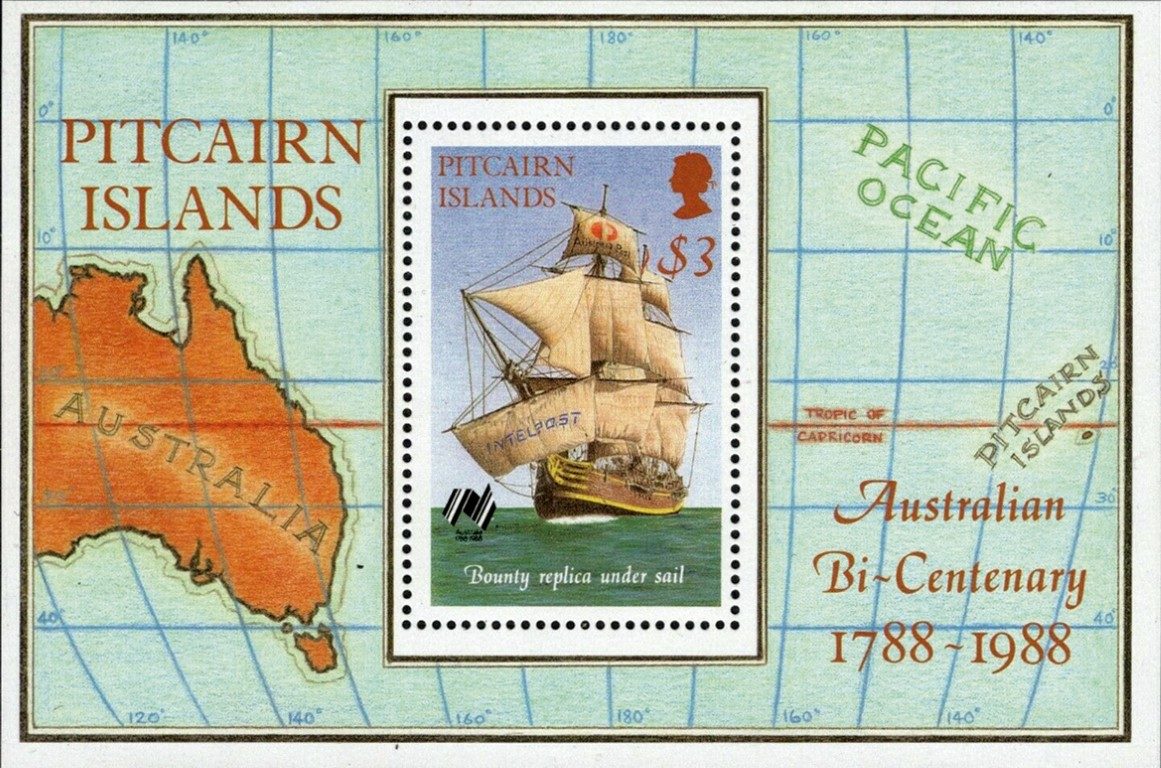
Mac McGuire was asked by Lloyds to oversee construction and in 1977 Dino de Laurentis agreed to finance the project. A year later the Bounty was completed (at a cost of $4 million) and the production budget set at $25 million. But following the sudden illness of his co-director, Lean abandoned the film and the whole enterprise seemed to be in jeopardy.
De Laurentis had sunk too much money into the scheme and recruited New Zealand director Roger Donaldson to pick up from Lean. Anthony Hopkins played Bligh with Mel Gibson in the role of Christian. The movie came to the big screen in 1984.
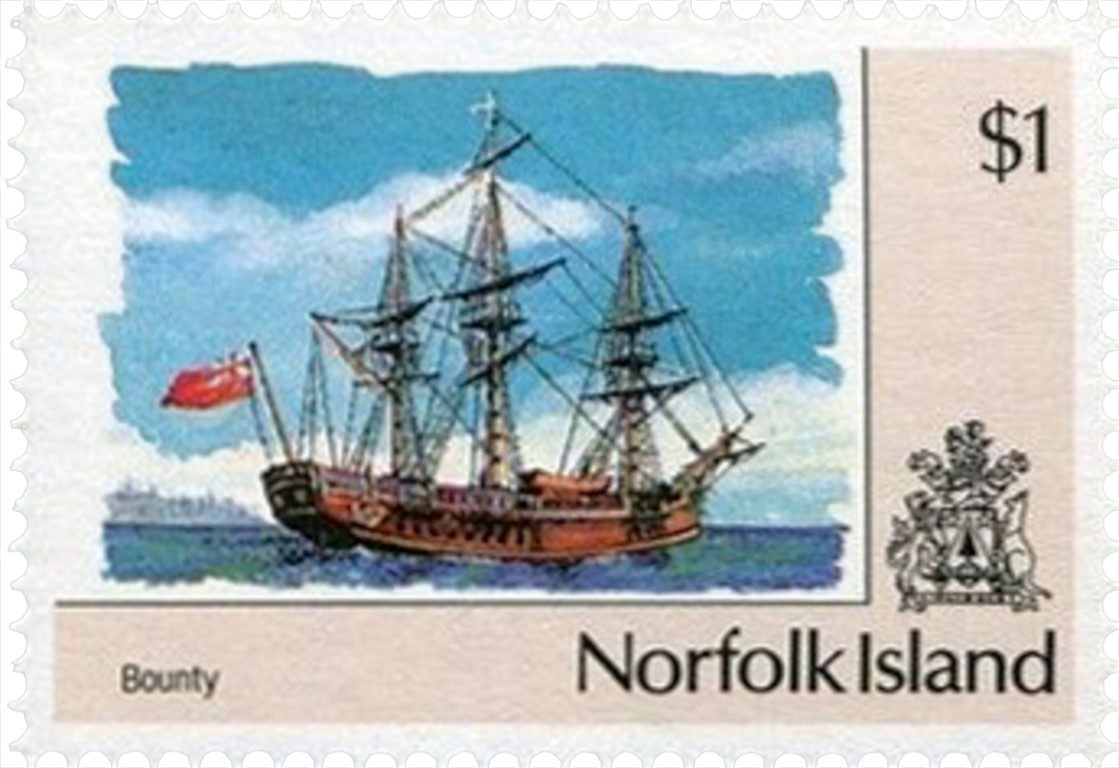
After filming the Bounty found its way to Sydney’s Darling Harbour where she played a major role in Australia’s 1988 bicentennial celebrations. She was sold to a Hong Kong company in 2007 but having been decommissioned a few years ago her future may be uncertain.
TAKING ON THE WORLD
New Zealand’s bicentenary gift to Australia was a restored historic yacht, Akarana. Then Prime Minister David Lange said it was a fine example of the maritime tradition shared by both countries.
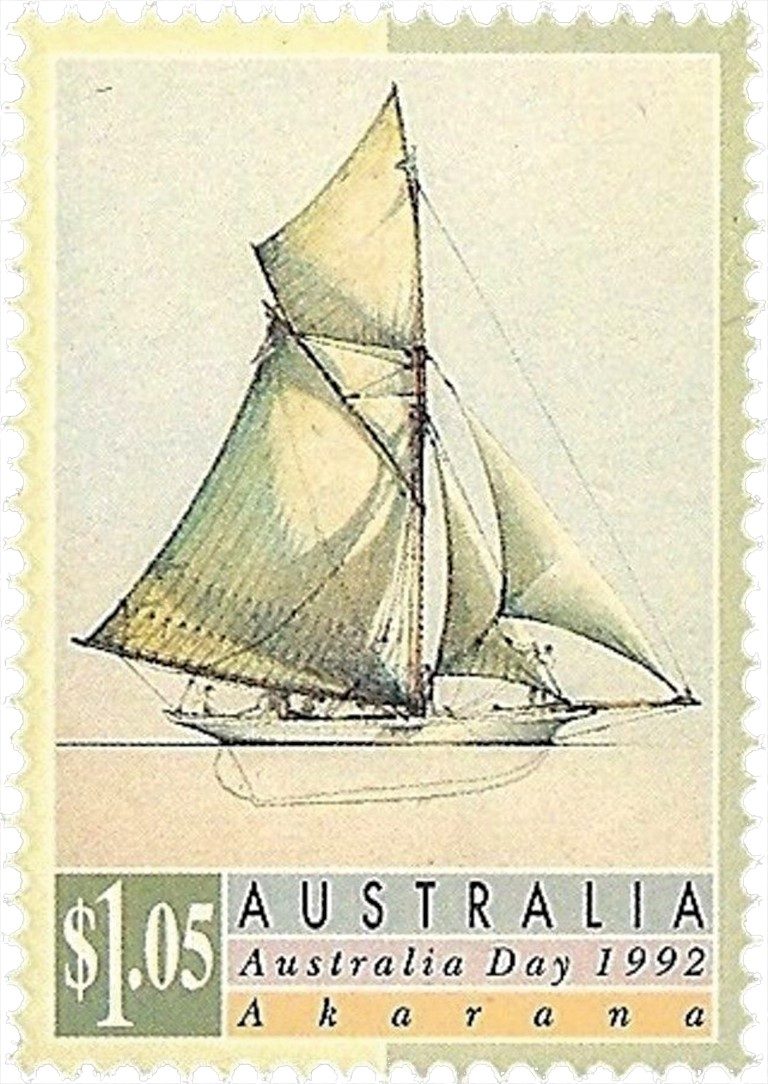
Built in Auckland by Robert Logan in 1887, she’d crossed the Tasman to take part in the Australian centennial regattas in Sydney and Melbourne in 1888. She won both races and became a star attraction at the Great Exposition in Sydney that year.
Restoration was tackled by Auckland’s Salthouse Brothers, with the Devonport Naval Dockyard attending to masts, spars and rigging. Her missing figurehead was found during the six-month restoration.
Australian PM Bob Hawke stepped the mast and Robert Logan’s grand-daughters witnessed her re-launch at Greenhithe. She was shipped to Sydney and launched there with due ceremony and a Maori blessing. She’s now based at the National Maritime Museum.
DINGHIES
The P Class and the Z Class (Zeddie or Takapuna) are two of New Zealand’s most iconic yachts. Peter Blake and Russell Coutts both cut their teeth in these spirited craft. Wellington civil engineer Harry Highet designed the P Class, first seen at Onerahi on New Year’s Day 1920.
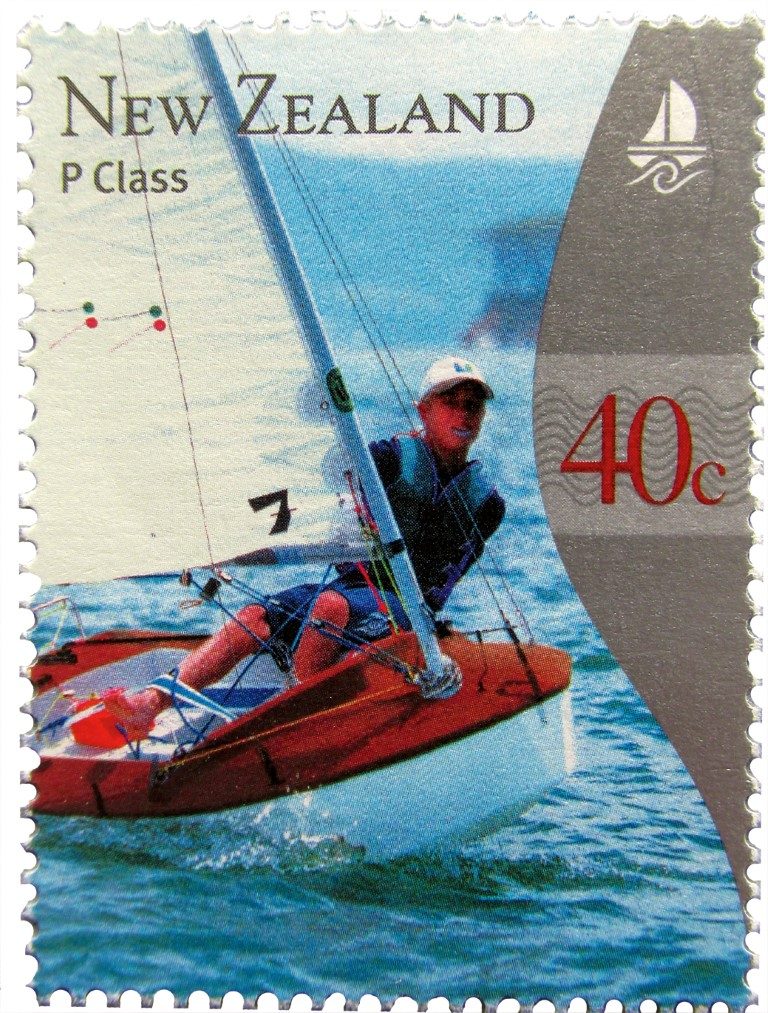
Also known as the Tauranga Class, it was developed further after Highet moved there around 1923, quickly gaining popularity with novice yachties. Just over two metres in length, it was originally built in plywood but later modifications introduced fibreglass, aluminium and carbon fibre.
The 12’6” Takapuna (designed by RB Brown at Northcote in the 1920s) features on the 1951 Health stamps. The national Zeddies competition is known as the Cornwell Cup in memory of 16-year old Jack Cornwell who lost his life in the Battle of Jutland in 1916.
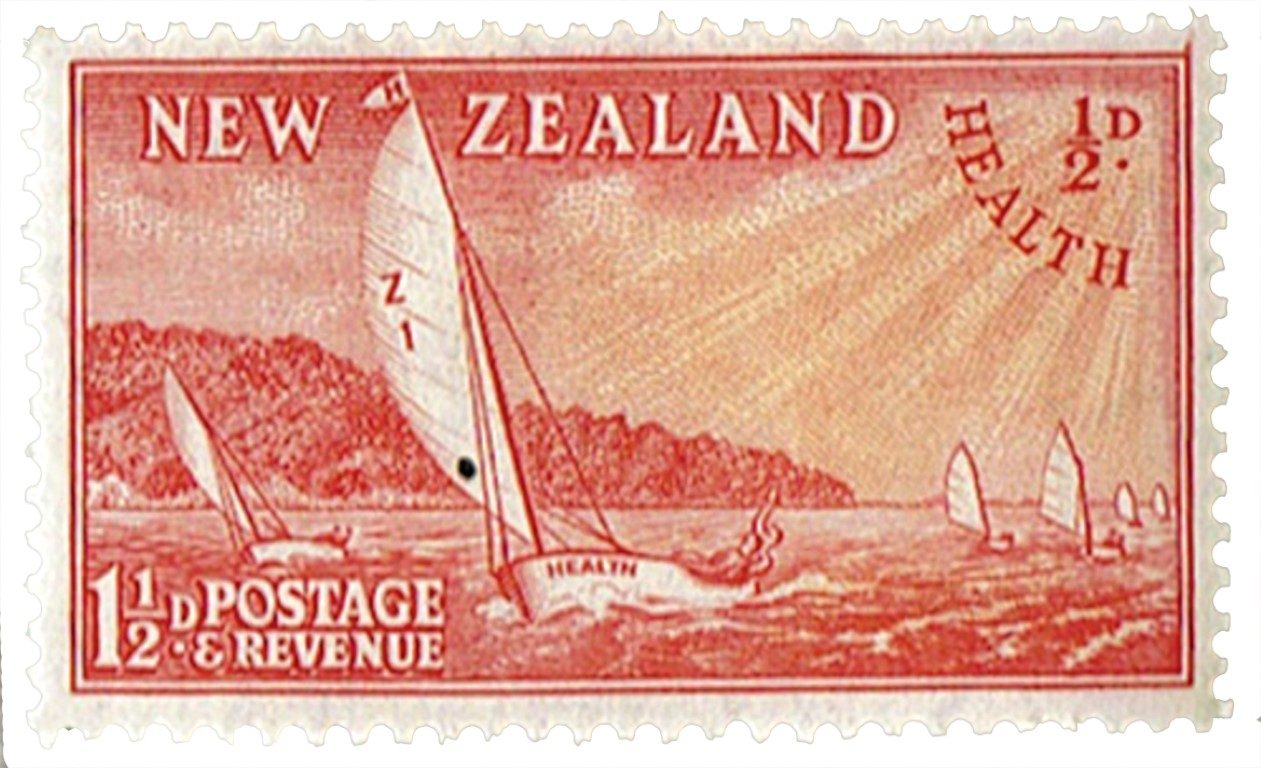
New Zealand’s exploits in the America’s Cup have been celebrated on stamps issued from 1987. Among them is Black Magic (NZL 32) – built by McMullen & Wing. She achieved victory in 1995 with Peter Blake as team leader and skipper Russell Coutts. Today Black Magic lives at Auckland’s Maritime Museum.
